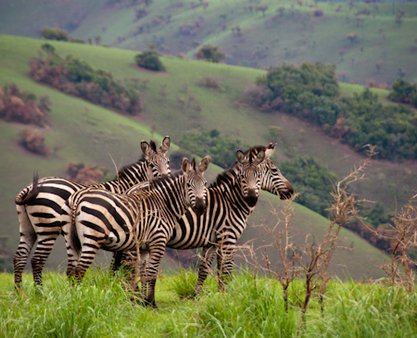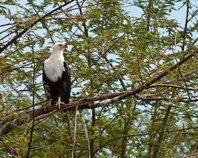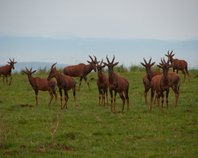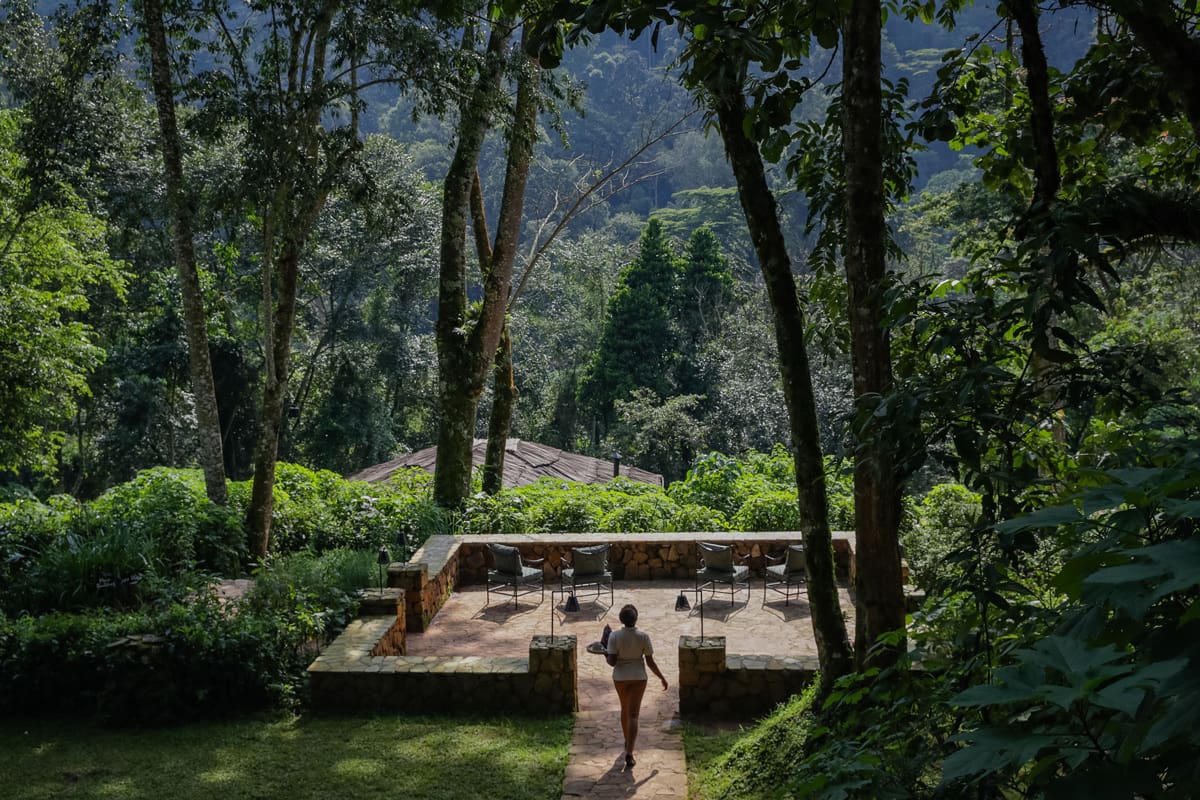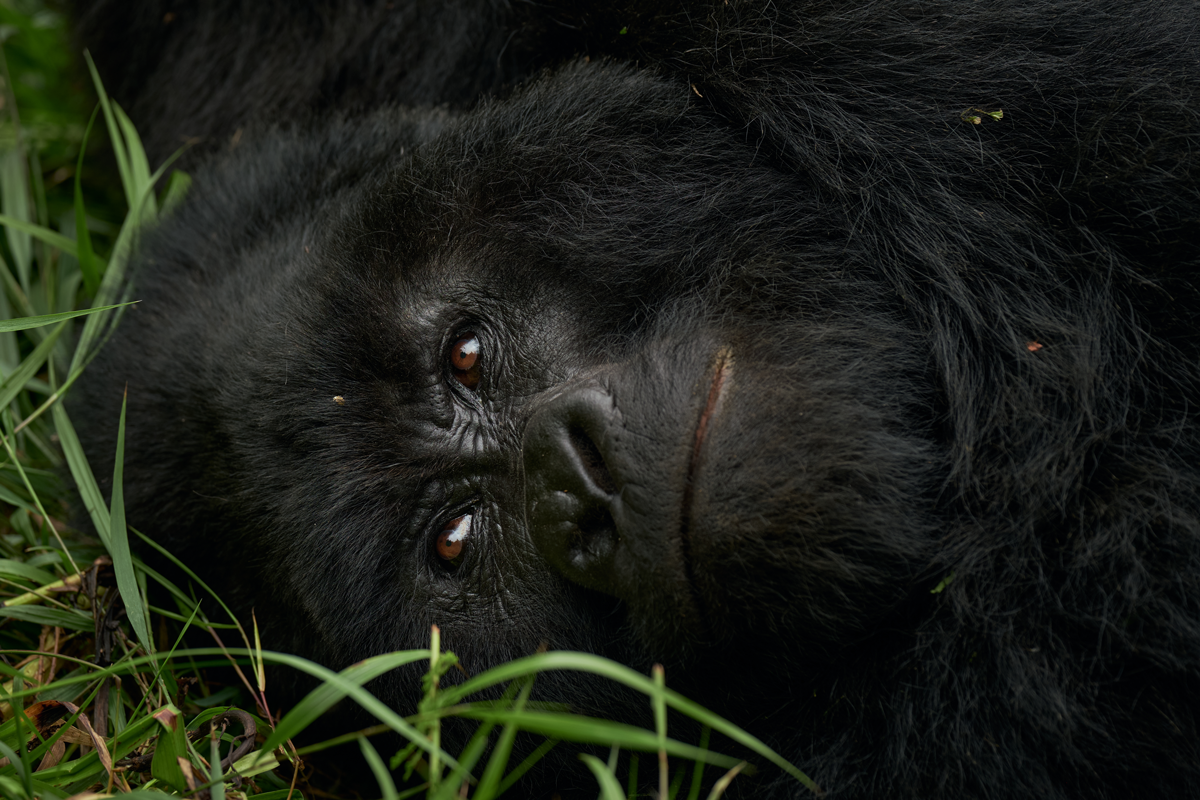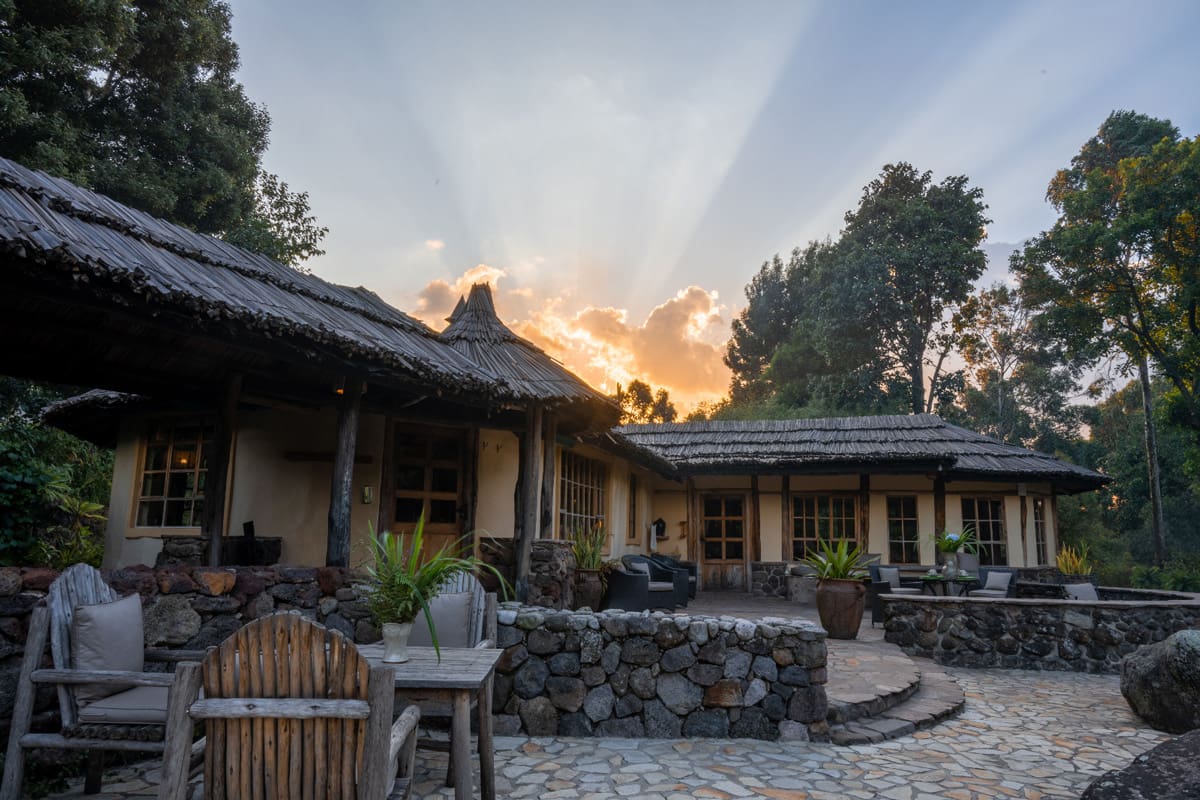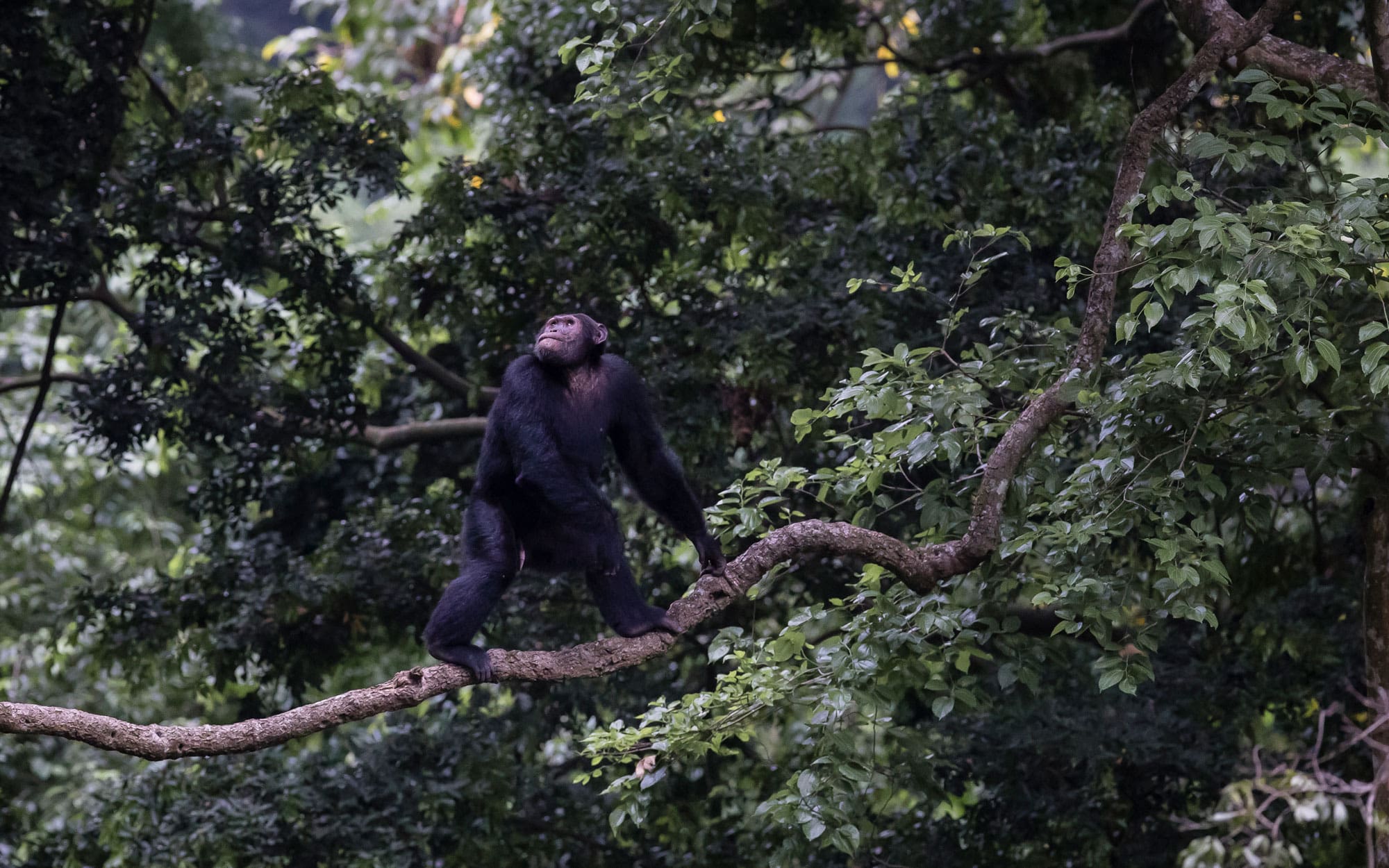What you will find is one of the most stunning savannah landscapes in Africa. Like the rest of Rwanda, Akagera is defined by its hills, rows of green and gold bluffs that descend into dense acacia groves, papyrus swamps and a labyrinth of lakes. The long, narrow park is divided into three sectors—south, central, and north—that are accessible from the main highway by graded dirt roads. Most visitors only come for a few hours, driving a circuit around the southern sector where it’s easy to spot giraffe and zebra and see hippos along Lake Ihema. However, in my opinion, you need to spend at least two full days in Akagera to enjoy all it has to offer. Here are my top four activity suggestions:
Drive Around Akagera’s Little Serengeti
The northern sector of park promises the most traditional African savannah-type experience in Rwanda. Because of the topography of the Akagera you’ll have to leave the southern or central sector of the park and drive north on the main highway to reach the expansive grasslands where substantial numbers of herbivores graze together.
Look out for giraffe, Cape buffalo, impala, zebra, shaggy waterbucks, and topi. In the daylight, you will have a hard time finding Akagera’s top predator, the leopard, but there’s a good chance you’ll see the carcasses of antelope killed by leopards being picked apart by jackals or hyena.
Explore Akagera’s Central Sector
On my two trips though Akagera’s Central Sector, the only car I saw was the one carrying me. Very few visitors seem to be interested in driving the long rough roads into the heart of Akagera, and even the park rangers might suggest you don’t waste your time. Let’s keep it our secret.
Most of the park’s 120 elephants tend to stay near the papyrus swamps bordering the lakes in the Central Sector and aren’t accustomed to human spectators. Viewing these truly wild elephants can be a hair-raising experience, as I attested in my last blog. Heading up from the swamps into the highlands, you’ll see small groups of many of same species seen in little Serengeti, but also some of the more shy antelope, including 600-kilo eland and tiny slender oribi.
My favorite campsite sits atop the tallest hill in the sector, offering a 360-degree view of the park. On very clear days you see four different countries from this point: Rwanda of course, the jagged peak of Mt. Mikeno in the Democratic Republic of Congo to the west, the summit of Mt. Muhabura in Uganda just north of Mt. Mikeno and the hills in Tanzania to the east.
Go Camping
Imagine waking up in the morning to the sounds of zebra munching grass mere feet from where you lay. Suddenly you hear a deep, reverberating “Ah, Ah, Ah, Ah” sound and a watery snort—a hippo announcing breakfast from the lakeshore. If you find this thought more exciting than terrifying, you’ve got to go camping in Akagera. I’ve visited 17 different safari parks in Africa and Akagera is the only one I’m aware of that has campsites in the middle of the wilderness with no protective fences, no guards, and no other separation between the campers and nature. The best time to go is during the full moon, when you can still see the wildlife and surrounding hills without a flashlight.
Perhaps because there are no lions in the park and the elephants tend to stay in the swampy areas, Akagera allows this type of open camping in a few designated sites around the park. The sites have outhouses and covered picnic areas, and the park rangers provide firewood, but you’ll need to bring your own food and camping equipment. Volcanoes Safaris can provide you with tents and sleeping bags and there are several large supermarkets in Kigali where you can pick up bread, cheese, meat, and a bottle of wine.
Cruise Lake Ihema
The best way to see Akagera’s aquatic wildlife and hundreds of species of water birds is on the water itself. The park offers day and sunset cruises on Lake Ihema near Akagera Game Lodge in the park’s southern sector. You’ll be able to get up close to animals you can’t safely approach on land, including hippos and crocodiles. There’s nothing quite like seeing a four-meter long mama crocodile sunning herself with half a dozen babies curled around her gaping maw. Some visitors may even be lucky enough spot a herd of elephants frolicking on the shore, or even an elephant swimming right by the boat.
There many small islands on Lake Ihema where you can see kingfishers, marabou storks, fish eagles, and other water birds congregating in large numbers. If you have a good eye and a little luck, you may even see more elusive species like hornbills or swamp flycatchers.
